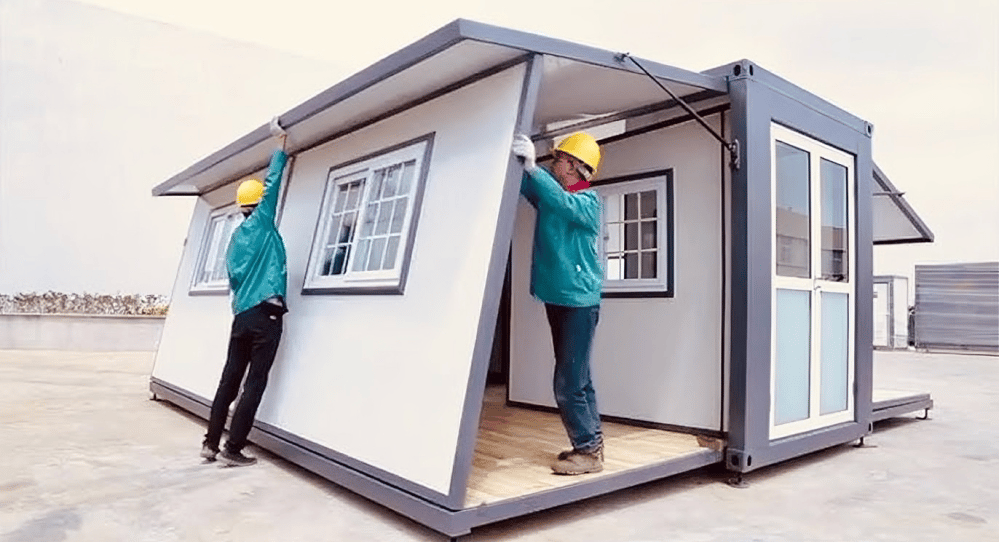The Ultimate Guide to Prefab Home Installation: What to Expect in 2025
1/13/20255 min read


When John and Maria Henderson decided to build their dream home in 2025, they were initially overwhelmed by the thought of a lengthy construction process. That's when they discovered prefabricated housing – a modern solution that promised to deliver their home in a fraction of the time of traditional construction. "We went from an empty lot to moving into our dream home in just 8 weeks," Maria shares. "The process was fascinating to watch, and nothing like what we expected."
If you're considering a prefab home, you're probably wondering exactly what happens between signing the contract and getting your keys. Let's walk through the entire process, demystifying each step and sharing real experiences from homeowners who've been through it.
The Journey Begins: Pre-Installation Planning
Think of pre-installation planning as the foundation of your success – except it happens before you even pour the actual foundation. Tom Martinez, a prefab installation project manager with 15 years of experience, explains: "The most successful installations I've overseen all had one thing in common: meticulous planning."
During this 4-6 week phase, your team will:
Survey your land to understand its unique characteristics
Secure all necessary permits (this alone can save weeks of delays later)
Plan utility connections
Create a detailed installation timeline
Coordinate with various contractors and inspectors
"Our biggest surprise was how much happened before our house even arrived," shares Sarah Chen, a recent prefab homeowner. "But all that planning meant zero surprises during installation."
Preparing Your Site: The Ground Work
Remember building sandcastles as a kid? You needed the perfect spot and the right sand consistency. Site preparation for your prefab home works similarly, just on a much larger scale. This 2-3 week process transforms your raw land into the perfect foundation for your new home.
Michael Brown, a site preparation specialist, notes: "People often underestimate site prep, but it's crucial. We're not just clearing land – we're creating the stage for your home's entire life."
Key preparation steps include:
Land clearing and leveling
Soil testing to ensure stability
Creating access routes for delivery
Installing proper drainage systems
Marking utility locations
Pro Tip: "Always plan for weather delays during site prep," advises Brown. "We build buffer time into our schedules because Mother Nature doesn't always cooperate."
The Foundation: Your Home's Backbone
Your foundation choice impacts everything from installation time to long-term home performance. In 2025, prefab homes offer three main foundation options:
Concrete Slab (5-7 days, $12,000-$25,000) Perfect for level lots and warmer climates
Crawl Space (7-10 days, $15,000-$30,000) Ideal for sloping lots and areas with specific ventilation needs
Full Basement (10-14 days, $25,000-$50,000) Best for additional living space and colder climates
Lisa Wong, who chose a crawl space for her prefab home, shares: "We spent extra time choosing our foundation type, and it paid off. Our home is perfectly level, and we have easy access to all our utilities."
Delivery Day: When Your Home Arrives
Imagine orchestrating a ballet of massive trucks and cranes – that's delivery day for your prefab home. This 1-3 day process is fascinating to watch but requires precise coordination.
"It's like a choreographed dance," explains David Thompson, a logistics coordinator. "Every move is planned, from the route the trucks take to the exact position of each module."
Your delivery team will:
Ensure clear access routes
Position cranes strategically
Create staging areas for modules
Establish safety perimeters
Monitor weather conditions
Real-life tip from recent homeowner James Wilson: "Take videos of the installation – it happens so fast, and it's amazing to watch your home come together."
Assembly: Where the Magic Happens
The 3-7 day assembly process is where your home truly takes shape. This is when most homeowners get excited – you can literally watch your house come together before your eyes.
The process follows a precise sequence:
Module placement (like giant puzzle pieces)
Connection of modules
Roof installation
External sealing
Initial systems integration
"We set up chairs and watched the whole thing," recalls Emma Rodriguez. "Our kids called it 'real-life LEGO building' – it was incredible to see how quickly and precisely everything came together."
Bringing Your Home to Life: Utility Connections
During the 1-2 week utilities phase, your home transforms from a structure into a functioning living space. This is when the real technical expertise shines.
Rebecca Chang, a systems integration specialist, explains: "Think of utilities as your home's circulatory system. We're connecting everything from water and electricity to internet and security systems."
Modern prefab homes in 2025 come pre-wired and pre-plumbed, making connections faster than ever:
Electrical systems are often operational within 2-3 days
Plumbing connections typically take 2-4 days
HVAC systems are usually running within 3-5 days
Communication systems are typically live within 1-2 days
The Final Touches: Interior Finishing
The 1-3 week interior finishing phase is where your house becomes a home. While much of the interior work is completed in the factory, some elements need to be finished on-site.
"This is when personalities really shine through," says interior finishing specialist Maria Gonzalez. "We're adding those final touches that make each prefab home unique."
Key finishing steps include:
Completing drywall seams
Installing final flooring sections
Placing fixtures and appliances
Adding trim and paint touch-ups
Final cleaning and preparation
Crossing the Finish Line: Inspections and Approvals
The 1-2 week inspection phase ensures your home is safe and ready for occupancy. In 2025, many inspections are streamlined thanks to advanced prefab construction methods.
Your home will undergo:
Structural inspections
Electrical system checks
Plumbing assessments
HVAC testing
Final occupancy approval
"Prefab homes often pass inspections more easily than traditional builds," notes building inspector Robert Chen. "The factory-controlled environment typically results in fewer issues."
Moving In: The Final Steps
The last week involves crucial details that prepare your home for move-in:
Landscape restoration
Final cleaning
Systems orientation
Documentation handover
Warranty registration
"Don't skip the systems orientation," advises recent homeowner Jennifer Martinez. "Understanding how everything works makes a huge difference in day-to-day living."
Navigating Common Challenges
Every installation faces challenges, but preparation makes them manageable. Common issues include:
Weather Delays: "We schedule installations during optimal weather windows when possible," explains project manager Mike Stevens.
Site Access: "Proper planning and communication with neighbors helps avoid access issues," notes logistics coordinator Sarah Brown.
Utility Coordination: "Early coordination with utility companies is crucial," advises systems specialist Tom Wilson.
Understanding Your Timeline and Budget
Total installation typically takes 6-10 weeks, with costs broken down as follows:
Site Preparation: 15-20%
Foundation: 20-25%
Transportation: 5-10%
Installation: 25-30%
Utilities: 10-15%
Finishing: 10-15%
Conclusion: Your Path to Home Sweet Home
Installing a prefab home in 2025 is a remarkably efficient process that combines precision engineering with careful planning. While the typical 6-10 week timeline might seem long, remember that traditional construction often takes 6-12 months.
As the Hendersons reflected at their house-warming party: "The process was so much smoother than we expected. Having this timeline guide would have made us even more confident from the start."
Remember:
Thorough planning prevents delays
Communication is key
Documentation matters
Flexibility helps
Professional guidance is invaluable
Are you ready to start your prefab home journey? With this guide in hand, you're well-prepared for the exciting process ahead.
[Expert Box] "The most successful prefab installations happen when homeowners understand the process and actively engage with their project team. This guide provides exactly the kind of information needed for a smooth installation journey."


